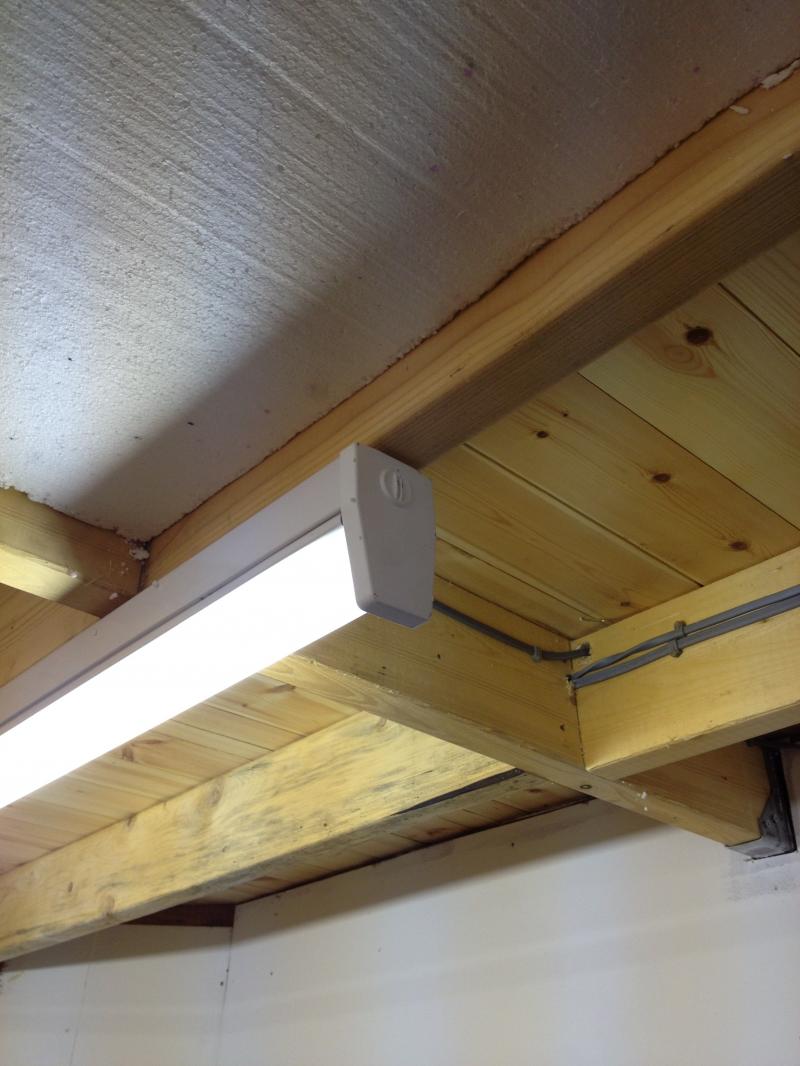D
danroach
Hello there.
I'm insulating a shed roof in my garden and have a question regards the wires which feed the lights.
I've attached an image which will hopefully help get the idea across.
My electrician has fitted lights in the shed and routed the cable through the roof joists at about half the total depth of the joists themselves. I was planning on leaving the roof un-insulated but, stupid me, didn't realise just how warm it'd get in the summer and how cold in the winter. So, I've stared insulating the roof with 50mm polystyrene deep sheets. Each compartment (between the joists) has two layers of 50mm polystyrene insulation with the wires sitting roughly in-between the two.
As I've started to do this, I began to think about possible overheating once the underside of the ceiling is boarded in. I'm hoping that the polystyrene will actually reduce the possibility of overheating but wondered if I could possibly get a few opinions - kind of make sure I'm not heading straight into some blatantly obvious pitfall...
Many thanks in advance,
Dan
I'm insulating a shed roof in my garden and have a question regards the wires which feed the lights.
I've attached an image which will hopefully help get the idea across.
Untitled
- danroach
- 1
My electrician has fitted lights in the shed and routed the cable through the roof joists at about half the total depth of the joists themselves. I was planning on leaving the roof un-insulated but, stupid me, didn't realise just how warm it'd get in the summer and how cold in the winter. So, I've stared insulating the roof with 50mm polystyrene deep sheets. Each compartment (between the joists) has two layers of 50mm polystyrene insulation with the wires sitting roughly in-between the two.
As I've started to do this, I began to think about possible overheating once the underside of the ceiling is boarded in. I'm hoping that the polystyrene will actually reduce the possibility of overheating but wondered if I could possibly get a few opinions - kind of make sure I'm not heading straight into some blatantly obvious pitfall...
Many thanks in advance,
Dan


